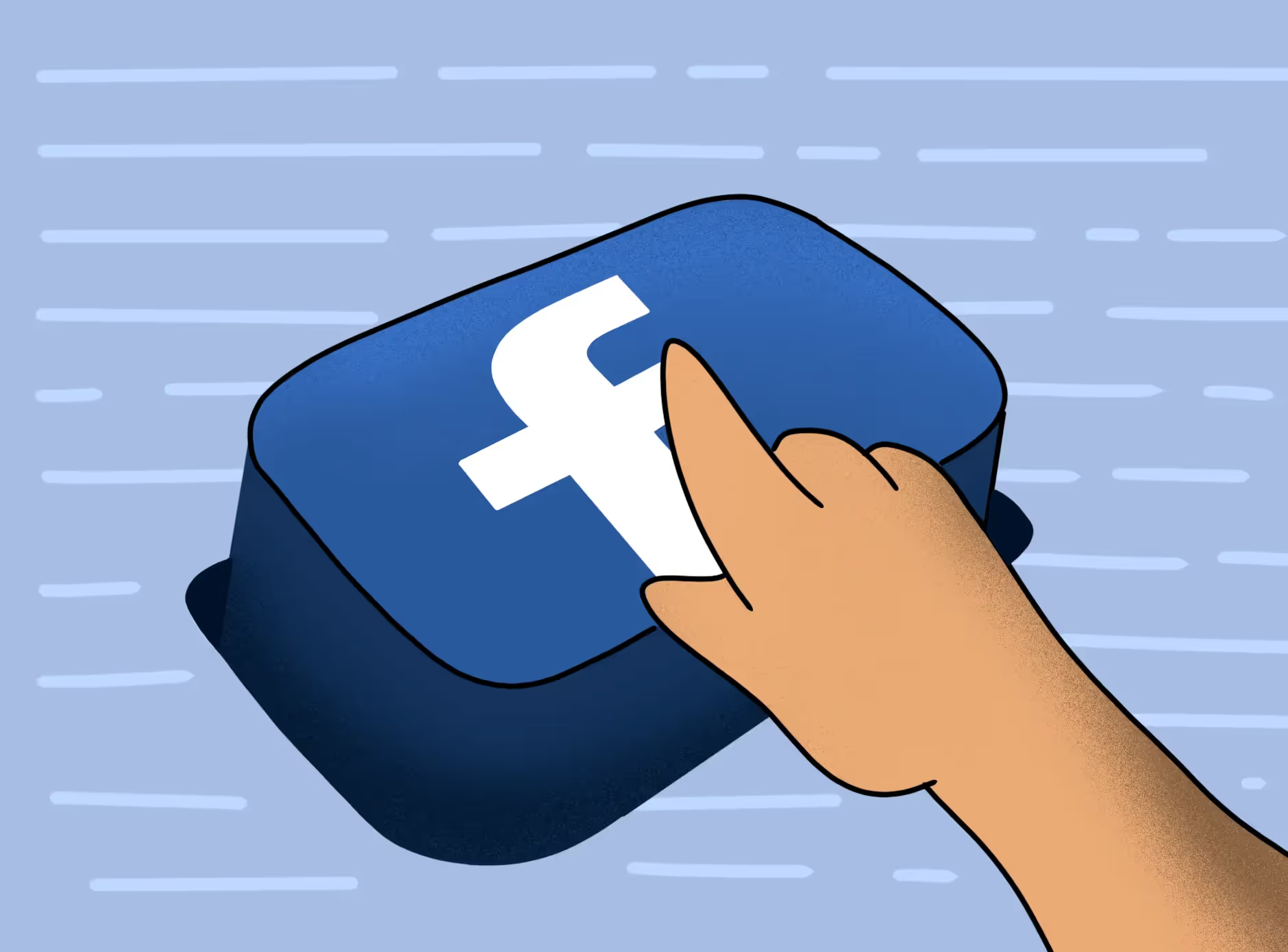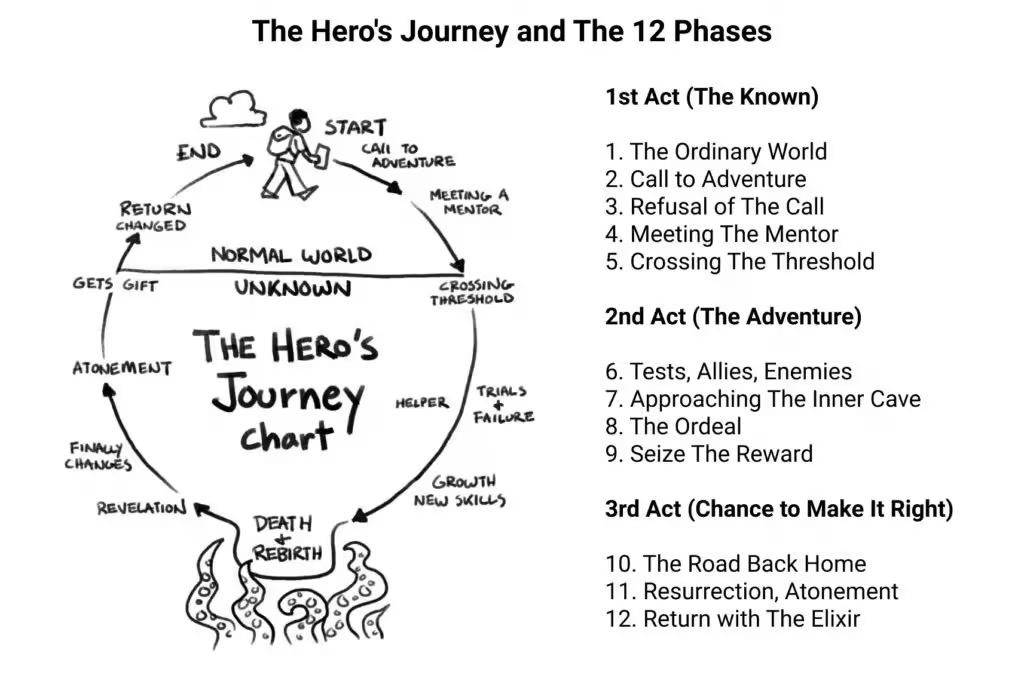




Key Takeaways
- Leveraging Longer Ads for Impact: Mindvalley demonstrates that longer Facebook ads can successfully drive engagement and revenue by providing in-depth, valuable content tailored to their audience, achieving $100M in revenue.
- Framework for Ad Success: Effective ads rely on defining a clear target audience, selecting appropriate ad formats, crafting compelling copy, using high-quality visuals, testing multiple creatives, and setting a clear call-to-action.
- The Hero’s Journey in Storytelling: Using the 12 phases of the Hero’s Journey, ads can craft relatable narratives, positioning the brand as the mentor guiding customers toward a transformational solution.
- Testing and Copywriting Excellence: Relentless ad testing and emotionally-driven copywriting are essential. Mindvalley's strategy includes testing 20-40 ad variations weekly and using engaging hooks to captivate audiences in the first few seconds.
Introduction
Are you tired of seeing Facebook ads that fail to capture your attention or convince you to take action? As a business owner, are you struggling to create ads that resonate with your target audience and drive conversions? If so, it may be time to explore the power of longer Facebook ads. By leveraging effective tactics and strategies, longer ads can help your brand stand out, communicate your value proposition, and ultimately drive more conversions.
One notable example of this is Mindvalley, an online platform, that has achieved tremendous success on the platform with their 40+ minute long ads and generated $100 million in revenue. These ads provide in-depth analysis of financial topics, resonating with their target audience and building trust.
It's important to note that longer ads may not be the best fit for every business, but for those that can effectively use this approach, it can lead to significant revenue growth. By providing valuable content and establishing themselves as thought leaders in their industry, businesses can attract and retain a loyal audience.
Let’s explore how longer Facebook ads for education or tutoring companies can be the key to success, through Mindvalley’s example.
Framework to Improve Facebook Ads
Facebook ads can be a powerful tool for businesses to reach and engage with their target audience. By following a framework that includes defining your target audience, choosing the right ad format, crafting compelling ad copy, using high-quality visuals, testing different ad creatives, setting a clear call-to-action, and monitoring and adjusting ad performance, businesses can create more effective Facebook ads that are tailored to their specific marketing objectives. With careful planning and ongoing optimization, businesses can leverage Facebook's massive user base and powerful targeting capabilities to deliver their message to the right people at the right time, driving increased awareness, engagement, and ultimately, conversions.
- Define your target audience: Defining your target audience is the first step in creating effective Facebook ads. To do this, you need to understand who your ideal customer is, their demographics, interests, and behaviors. This can be done by analyzing your existing customer base, conducting market research, and using Facebook Audience Insights to gather data on your target audience. Once you have a clear understanding of your target audience, you can create ads that speak directly to their needs and interests.
- Choose the right ad format: Facebook offers several ad formats, including image, video, carousel, and more. Each ad format has its own unique benefits and is best suited for different campaign objectives. For example, image ads are great for promoting a single product or service, while carousel ads are ideal for showcasing multiple products or services in one ad. It's important to choose the right ad format that aligns with your campaign objectives and resonates with your target audience.
- Craft compelling ad copy: Writing compelling ad copy is essential for grabbing attention, communicating your value proposition, and encouraging users to take action. Your ad copy should be concise, focused on benefits, and speak directly to your target audience. It's important to highlight the unique features and benefits of your product or service, and to use language that resonates with your target audience.
- Use high-quality visuals: Using high-quality visuals is essential for creating engaging and visually appealing Facebook ads. This includes using images and videos that are relevant to your target audience, visually appealing, and high-quality. It's important to avoid using stock photos and instead opt for original content that showcases your brand's personality and unique value proposition.
- Test different ad creatives: Testing different ad creatives is essential for identifying what resonates best with your target audience. This includes experimenting with different ad formats, copy, and visuals to see what drives the best results. It's important to use A/B testing to compare the performance of different ad creatives and adjust your strategy accordingly.
- Set a clear call-to-action: Every Facebook ad should have a clear call-to-action that tells users what to do next. This can include visiting your website, signing up for a newsletter, or purchasing a product. It's important to use clear and concise language that motivates users to take action and aligns with your campaign objectives.
- Monitor and adjust: Monitoring and adjusting your Facebook ad performance is essential for optimizing your strategy and achieving your campaign objectives. This includes keeping an eye on key metrics such as reach, engagement, and conversions, and adjusting your targeting, ad creatives, and copy as needed. Facebook's ad reporting tools can help you track and analyze your ad performance to make data-driven decisions.
Selling an Underdog Story
When it comes to selling an underdog story with a solution, there are a few key things to keep in mind:
- Try multiple hooks with the same story: Don't be afraid to experiment with different angles or hooks when telling your underdog story. What resonates with one audience may not work for another, so try to create variations of the same story that appeal to different demographics or pain points.
- Tell the story yourself to control the narrative: It's important to be the one telling your underdog story, as this allows you to control the narrative and ensure that the message is conveyed in the way you intended. This can be done through various channels, such as video ads or social media posts.
- Study the hero's journey and place the story with your product & customer: The hero's journey is a storytelling framework that can be used to create a compelling narrative that resonates with your audience. By placing your underdog story within this framework, you can create a powerful connection with your customers and position your product or service as the solution they need to overcome their challenges.
Below is the hero’s journey framework:

A. 1st Act: The Known
i. The Ordinary World: This is the starting point before the journey begins. It could be a problem or challenge that your target audience is facing, such as not having enough time to study or not being able to save money.
ii. The Call to Adventure: This is the initial challenge or opportunity that sets the hero on the path of the journey. In the context of Facebook ads, this could be a solution or product that helps your target audience overcome their challenge.
iii. Meeting with the Mentor: This stage represents the hero's encounter with a guide or mentor figure who provides them with advice, knowledge, or tools to overcome obstacles. In the context of Facebook ads, this could be a testimonial or case study from someone who has successfully used your product or service to overcome their challenge.
iv. Crossing the Threshold: This stage represents the hero's transition into the unknown world and the start of their journey. In the context of Facebook ads, this could be the moment when the hero decides to take action and try your product or service.
B. 2nd Act: The Adventure
v. Tests, Allies, and Enemies: This stage represents the hero's encounters with various obstacles, helpers, and adversaries. In the context of Facebook ads, this could be the challenges or objections that your target audience might have when considering your product or service.
vi. Approach to the Inmost Cave: This stage represents the hero's approach to the central challenge or goal of the journey. In the context of Facebook ads, this could be the moment when your target audience sees the full benefits and features of your product or service.
vii. The Ordeal: This stage represents the hero's most significant challenge or obstacle that they must overcome. In the context of Facebook ads, this could be the moment when your target audience decides to make a purchase or take action.
viii. The Reward: This stage represents the hero's achievement of their goal or attainment of new knowledge or insight. In the context of Facebook ads, this could be the moment when your target audience experiences the benefits of your product or service.
C. 3rd Act: Chance to Make it Right
ix. The Road Back: This stage represents the hero's journey back to their starting point, often with new challenges or dangers to face. In the context of Facebook ads, this could be the moment when your target audience shares their experience with others and becomes an advocate for your brand.
x. Resurrection: This stage represents the hero's ultimate test, where they demonstrate their transformation and growth. In the context of Facebook ads, this could be the moment when your target audience realizes the long-term benefits of your product or service.
xi. Return with the Elixir: This stage represents the hero's return to the ordinary world with a new perspective, knowledge, or tool that benefits themselves and others. In the context of Facebook ads, this could be the moment when your target audience becomes a loyal customer and shares
This concept can be applied to Facebook ads by creating an ad that shows the journey from a problem or challenge to a solution or success.
Relentless Testing
Mindvalley's success with Facebook ads can be attributed to their relentless testing and experimentation. They test around 20 to 40 ads every week, each with multiple hooks, and track their performance to determine which ads work best for their audience.
They have only two main funnels: direct sales and webinar to sales. This allows them to focus their testing efforts on these two areas and optimize their funnels for maximum conversion.
Mindvalley follows the 80/20 principle, where 80% of their ads are proven performers, and 20% are "crazy" ideas that they want to test. This helps them strike a balance between what they know works and what they want to explore.
Mindvalley knows that the first few seconds of an ad are critical, so they put a lot of emphasis on the hook and lead-in of their ads. They try to grab their audience's attention and create a strong emotional connection with them right from the start.
Copywriting that Sells
Copywriting plays a crucial role in selling the idea of a better life to potential customers. Here are some key points to keep in mind:
- Primary text copy: The primary text copy should be written in a way that sells the imagination of a better life. It should prompt readers to think, "What if I could achieve this?" or "What if this could be me?" This approach can help create an emotional connection between the customer and the product or service.
- CTA and headline copy: The call-to-action (CTA) and headline copy are critical elements in convincing customers to take the next steps towards purchasing. They should be persuasive and make customers feel guilty about not taking action. This approach can prompt customers to take action and make the purchase.
- Video script: It's essential to let your copywriter write the video script. A well-written video script can make a huge difference in the success of a Facebook ad. It should be compelling and engaging, providing value to the customer while also promoting the product or service.
By keeping these key points in mind, Mindvalley creates a copy that sells the idea of a better life to potential customers, leading to increased conversions and revenue.
Conclusion
Creating effective Facebook ads that sell better requires a deep understanding of your target audience, the right ad format, compelling ad copy, high-quality visuals, testing and experimentation, and the Hero's Journey. By following these strategies and techniques, you can create Facebook ads that are more effective at reaching your target audience and achieving your marketing objectives.

Tutors Edge by EdisonOS
in our newsletter, curated to help tutors stay ahead!
Tutors Edge by EdisonOS
Get Exclusive test insights and updates in our newsletter, curated to help tutors stay ahead!
Recommended Reads
Recommended Podcasts












.png)
.webp)
